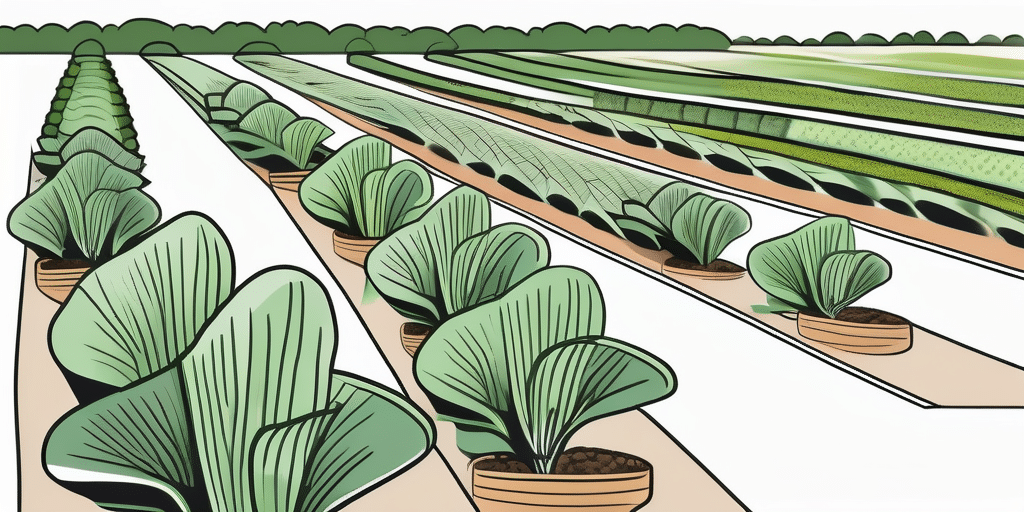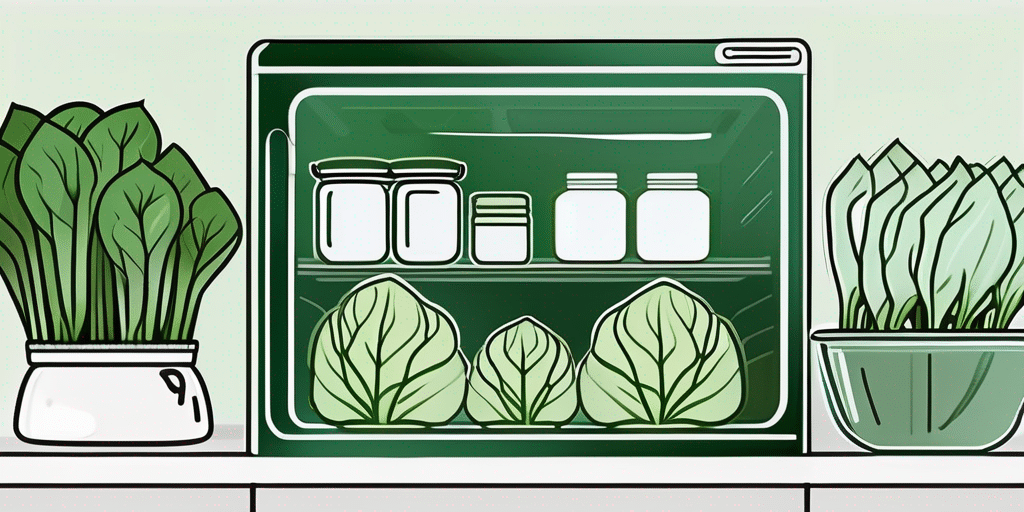In the world of leafy greens, there are many varieties to choose from. Two popular options are baby bok choy and purple bok choy. While they may seem similar at first glance, they do have their differences. In this article, we will explore the characteristics and benefits of both baby bok choy and purple bok choy, so you can decide which one is right for you.
What is Baby Bok Choy?
Baby bok choy, also known as Shanghai bok choy, is a leafy green vegetable that is a member of the cabbage family. It is a smaller version of the more mature bok choy and has a mild, slightly sweet flavor. Baby bok choy is characterized by its vibrant green color, tender leaves, and crunchy stalks, making it a versatile ingredient in many dishes.
When selecting baby bok choy at the grocery store or farmer’s market, look for firm stalks and fresh, unwilted leaves. Avoid any bok choy that appears yellowed or has brown spots, as this may indicate it is past its prime.
Pros of Baby Bok Choy
There are several benefits to incorporating baby bok choy into your diet:
- Rich in nutrients: Baby bok choy is packed with vitamins A, C, and K, as well as calcium, potassium, and iron. These essential nutrients support overall health and well-being.
- Low in calories: With only about 9 calories per cup, baby bok choy is a great option for those watching their calorie intake. It can be a satisfying addition to meals without adding excess calories.
- High in fiber: The fiber content in baby bok choy promotes healthy digestion and can help prevent constipation. Fiber is also beneficial for maintaining a healthy weight and reducing the risk of chronic diseases.
In addition to its nutritional benefits, baby bok choy is a versatile vegetable that can be enjoyed in a variety of ways. It can be stir-fried, steamed, sautéed, or even eaten raw in salads. The mild flavor of baby bok choy pairs well with a wide range of seasonings and ingredients, making it a popular choice in Asian cuisine.
What is Purple Bok Choy?
Purple bok choy, also known as purple choy sum, is a vibrant and visually appealing variety of bok choy. It has purple leaves and stems, which add a pop of color to any dish. Similar to baby bok choy, purple bok choy has a mild flavor but with a slightly peppery undertone.
When it comes to nutrition, purple bok choy offers a unique profile compared to its green counterparts. The purple color of this variety comes from anthocyanins, which are powerful antioxidants that can help protect against cell damage. These antioxidants play a crucial role in reducing inflammation and promoting overall health. In addition to its antioxidant content, purple bok choy contains lutein and zeaxanthin, two nutrients that are beneficial for maintaining healthy vision. Including purple bok choy in your diet can contribute to supporting eye health and reducing the risk of age-related macular degeneration.
Pros of Purple Bok Choy
Here are some advantages of incorporating purple bok choy into your meals:
- Antioxidant-rich: The purple color of this variety comes from anthocyanins, which are powerful antioxidants that can help protect against cell damage.
- Eye health support: Purple bok choy contains lutein and zeaxanthin, two nutrients that are beneficial for maintaining healthy vision.
- Versatile ingredient: The striking color of purple bok choy can make any dish visually appealing and unique.
Not only does purple bok choy offer a visual feast, but it also provides a nutritional powerhouse that can enhance your overall well-being. Its unique combination of antioxidants and vision-supporting nutrients makes it a valuable addition to any diet. Whether stir-fried, sautéed, or added raw to salads, purple bok choy can bring a delightful crunch and a burst of color to your culinary creations.
Is Baby Bok Choy or Purple Bok Choy Right for You?
Both baby bok choy and purple bok choy have their own unique qualities. The choice ultimately depends on your taste preferences and nutritional needs. If you prefer a milder flavor and enjoy the versatility of a green leafy vegetable, baby bok choy may be the right choice for you. On the other hand, if you are looking to add a burst of color to your plate and benefit from the antioxidants found in purple vegetables, purple bok choy is worth trying.
Baby bok choy, also known as Shanghai bok choy, is a smaller and more tender version of the traditional bok choy. It is characterized by its crisp texture and subtle sweetness, making it a popular choice for stir-fries, soups, and salads. This miniature vegetable is packed with essential nutrients such as vitamin A, vitamin C, and calcium, making it a great addition to a balanced diet.
Purple bok choy, on the other hand, gets its vibrant hue from anthocyanins, powerful antioxidants that have been linked to various health benefits. These antioxidants help protect the body from oxidative stress and inflammation, potentially reducing the risk of chronic diseases. In addition to its antioxidant properties, purple bok choy offers a unique flavor profile that is slightly more peppery than its green counterpart, adding a distinctive twist to your culinary creations.
Frequently Asked Questions
Q: Are baby bok choy and regular bok choy the same thing?
A: Baby bok choy and regular bok choy come from the same family, but they are not exactly the same. Baby bok choy is smaller and more tender, while regular bok choy has larger leaves and thicker stalks.
Q: Can I eat baby bok choy raw?
A: Yes, baby bok choy can be enjoyed raw. Its mild flavor and crisp texture make it a great addition to salads and slaws.
Q: How should I store baby bok choy?
A: Baby bok choy can be stored in the refrigerator. Keep it unwashed in a plastic bag with the air squeezed out to maintain freshness. It is best used within a week.
Q: Can I substitute baby bok choy for purple bok choy in recipes?
A: While the flavors are similar, the vibrant color of purple bok choy may be missed if you substitute it with baby bok choy. However, if color is not a priority, the substitution can be made without significantly altering the taste or texture of the dish.
Q: Are there any side effects of eating bok choy?
A: Bok choy is generally safe to eat, but some individuals may experience digestive discomfort if consumed in large quantities. It is always best to listen to your body and consume it in moderation.
Q: Can I grow baby bok choy or purple bok choy at home?
A: Absolutely! Both baby bok choy and purple bok choy can be grown in your own backyard or in containers. They thrive in cool seasons and require well-drained soil and adequate sunlight.
Now that you are familiar with the characteristics and benefits of both baby bok choy and purple bok choy, you can make an informed decision on which one to include in your next meal. Whether you choose the mild and versatile baby bok choy or the visually stunning and antioxidant-rich purple bok choy, both options will add flavor and nutrition to your plate.
When it comes to cooking with baby bok choy, the possibilities are endless. You can stir-fry it with garlic and ginger for a quick and delicious side dish, or steam it and drizzle it with a tangy soy sauce dressing. If you’re feeling adventurous, you can even stuff the leaves with a flavorful filling and bake them to perfection.
As for purple bok choy, its vibrant color can elevate any dish. Imagine a colorful stir-fry with purple bok choy, red bell peppers, and yellow squash, or a refreshing purple bok choy salad with juicy cherry tomatoes and creamy avocado. The visual appeal of purple bok choy will not only make your meal more appetizing but also impress your guests.
Start Cultivating Your Green Thumb with How to Grow Everything
Ready to bring the lush flavors of baby bok choy and the vibrant hues of purple bok choy to your own garden? Subscribe for free to How to Grow Everything and unlock a world of expert gardening knowledge. Whether you’re a seasoned green thumb or just starting out, we’ll provide you with personalized advice to help you build the garden of your dreams. Enjoy the best gardening tips, special offers, and insightful articles tailored to your grow zone and interests—delivered straight to your inbox. Join our family of gardening enthusiasts today and transform your gardening experience, 100% free!






